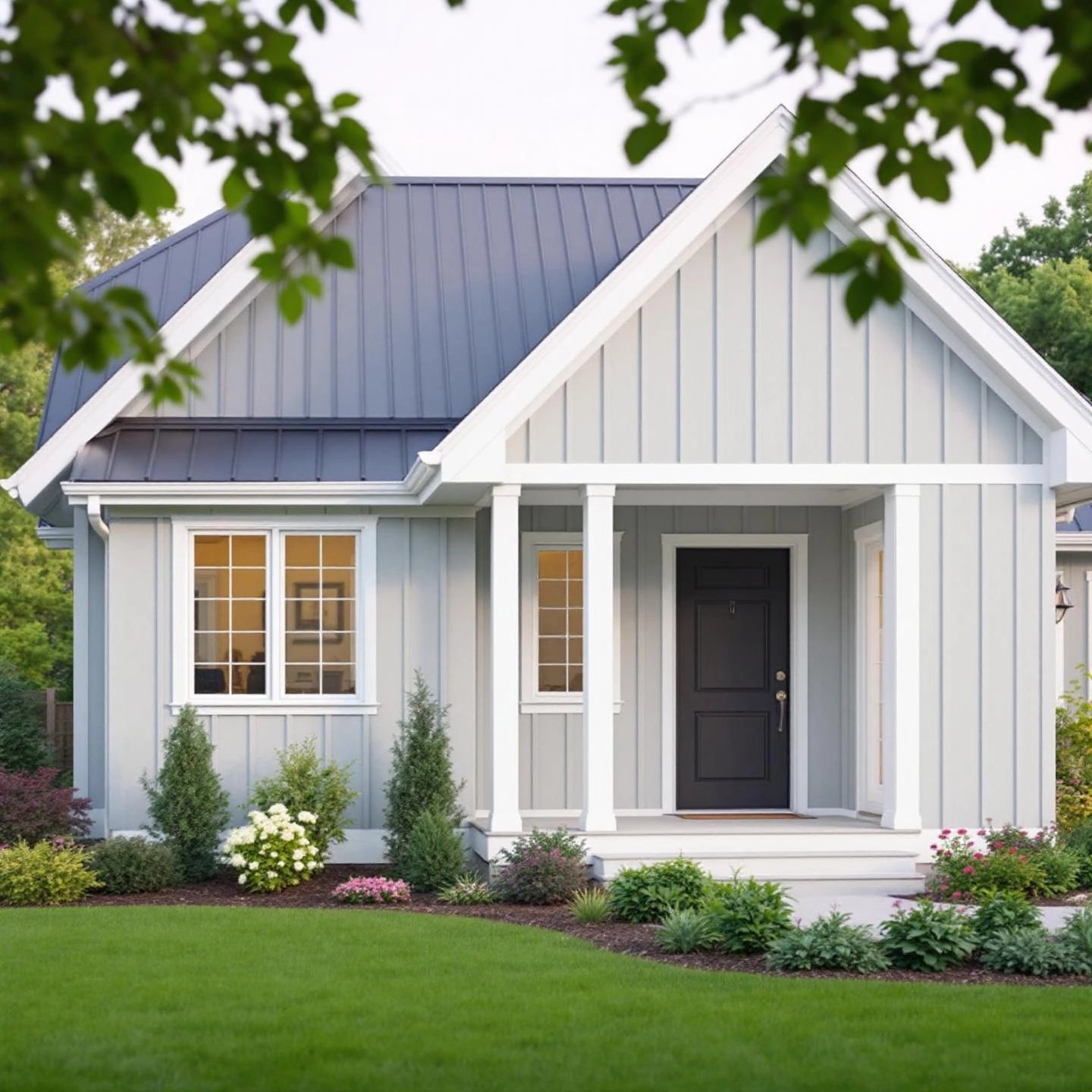
When you picture the exterior of a classic American home, what comes to mind? Maybe it’s the warm look of painted wood or the sleek lines of modern panels. But have you ever wondered why so many neighborhoods feature a silvery, sturdy exterior that seems to stand the test of time? That’s aluminum siding—a material with a rich legacy and a renewed relevance for today’s homeowners.
Aluminum siding has been a trusted choice in home construction since the late 1930s, when advances in technology made it a practical, affordable alternative to wood. Its rise in popularity was no accident. Imagine a siding option that resists rust, shrugs off insects, and doesn’t warp or rot in the rain. That’s the promise aluminum siding delivered to generations of homeowners. Fast forward to today, and you’ll notice a resurgence of interest in this material—not just for its classic appeal, but for its adaptability to modern design trends and sustainable building practices.
So, why does aluminum siding for homes still matter? Here are some key reasons:
But that’s not all. Recent design trends are embracing metal siding for its sleek, modern appearance and ability to mimic natural materials like wood, giving homes a custom, high-end look without the maintenance headaches. For those focused on long-term value, aluminum siding’s longevity and minimal upkeep mean fewer costly repairs and replacements over the years.
This article is your comprehensive guide to aluminum siding. We’ll explore what it is, how it stacks up against popular alternatives like vinyl, what influences its cost, and how to keep it looking great with simple care routines. You’ll also find practical advice for painting, repairing, and hiring the right professionals for your project. Whether you’re renovating a classic home or building new, understanding the benefits and nuances of aluminum siding can help you make a confident, value-driven choice for your home’s exterior.
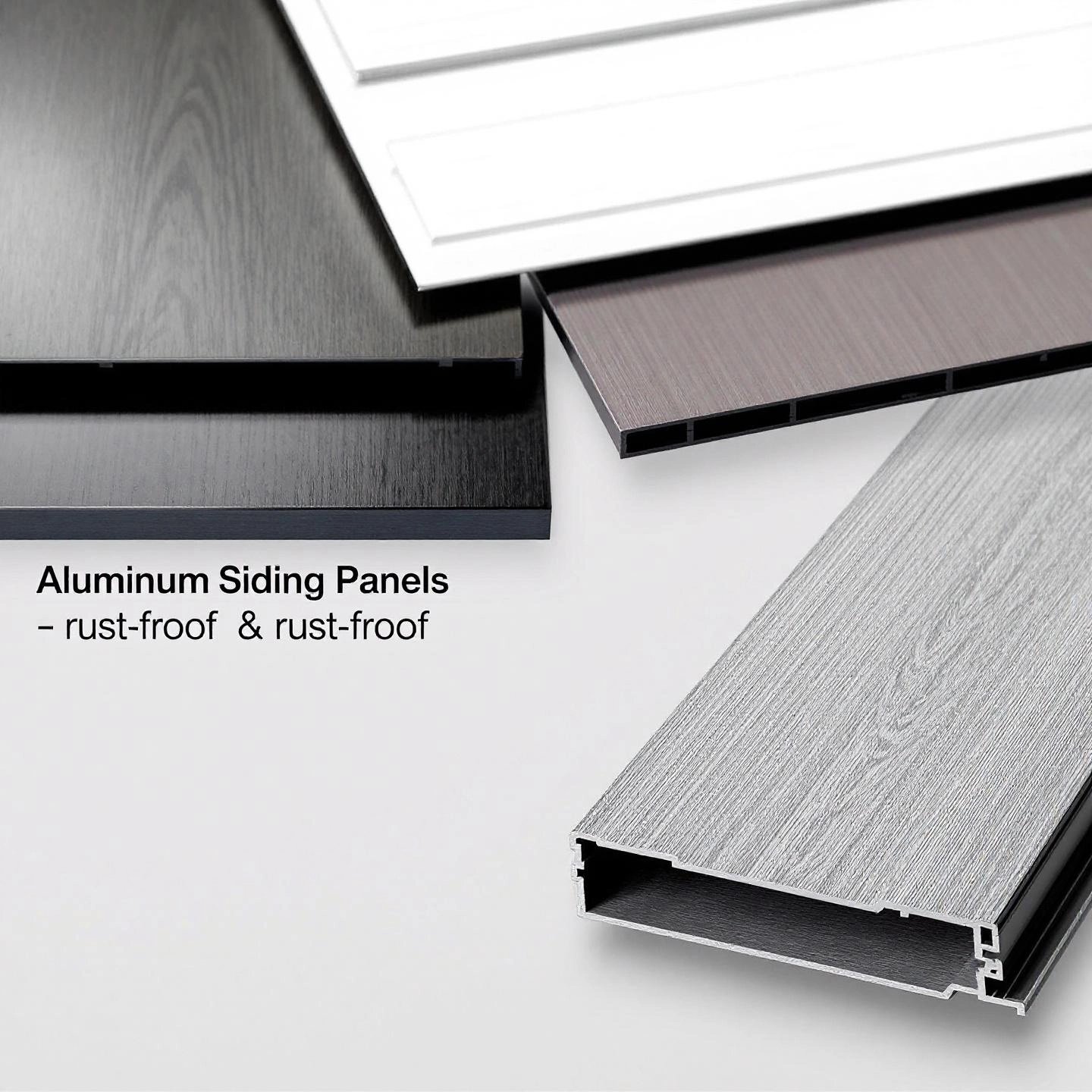
Ever wondered what gives some homes that sleek, metallic finish or why certain exteriors seem to endure decades of harsh weather? The answer often lies in aluminum siding panels—a classic and surprisingly modern choice for homeowners seeking both style and substance. Let’s break down what aluminum house siding really is, how it’s made, and why its unique properties set it apart from the competition.
At its core, aluminum siding is crafted from large, rolled sheets of aluminum. These sheets are fed through forming machines that shape them into panels or planks designed for easy installation on homes. The process typically includes:
Some manufacturers, like Maibec, elevate the process by offering HD-printed aluminum planks and architectural battens, providing options that mimic wood or stone while retaining all the benefits of metal.
When you shop for aluminum siding panels, you’ll notice a variety of profiles, each lending a distinct look to your home. Common styles include:
With such a range, aluminum house siding can suit everything from mid-century ranches to contemporary builds.
What really sets aluminum apart isn’t just how it looks, but how it performs. Consider these standout features:
These properties add up to a siding solution that’s both practical and protective for a wide range of climates and home styles.
When selecting aluminum siding, you’ll hear about “gauges”—a measure of thickness. Here’s what you need to know:
Imagine living in a neighborhood where hailstorms are common—opting for a thicker gauge could mean fewer repairs and a longer-lasting exterior.
Finally, not all aluminum siding is created equal. The quality of manufacturing directly affects how well your siding performs over time. Reputable manufacturers invest in advanced finishing techniques, precise forming equipment, and rigorous quality checks to deliver panels that are consistent, durable, and true to color.
For example, companies like Shengxin Aluminum leverage state-of-the-art production lines and strict quality control to produce high-performance aluminum profiles. Choosing a trusted manufacturer ensures your investment in aluminum house siding pays off with years of reliable protection and curb appeal. If you’re planning a new project or renovation, sourcing from a leading supplier can make all the difference in both performance and peace of mind.
Now that you know what aluminum siding is and why its composition and quality matter, let’s see how it compares to one of its biggest rivals—vinyl siding. In the next section, we’ll break down their differences to help you choose the best fit for your home.
Choosing the right siding isn’t just about curb appeal—it’s about protecting your home, managing long-term costs, and making the best choice for your climate and lifestyle. If you’ve found yourself torn between aluminum vs vinyl siding, you’re not alone. Both materials have loyal fans and proven track records, but their differences can make one a better fit for your needs. Let’s walk through a side-by-side comparison to help you make an informed decision.
| Feature | Aluminum Siding | Vinyl Siding |
|---|---|---|
| Durability | Highly durable and resistant to rot, rust, and insects. Prone to dents from hail or impact, but not to cracking. Can last over 50 years with proper care. | Durable and flexible; resists rot and insects. Can crack or become brittle in extreme cold, but is less likely to dent. Lifespan of 40+ years in moderate climates. |
| Lifespan | 50+ years with maintenance; ideal for harsh climates. | 40+ years in temperate climates; may need earlier replacement in harsh weather. |
| Maintenance | Low maintenance: occasional cleaning and repainting every 10–15 years. Dents can be patched, and panels are paintable. | Very low maintenance: color runs through the material, so no painting required. Occasional cleaning keeps it looking new. |
| Cost | $3–$7.50 per sq. ft. installed; premium options up to $9–$10 per sq. ft. Higher initial cost, but long-term value due to longevity and repaintability. | $2–$7 per sq. ft. installed; premium or insulated options may reach $9 per sq. ft. Lower initial cost, but may require earlier replacement in harsh climates. |
| Appearance & Color | Modern or traditional looks; available in smooth or wood-grain finishes. Can be repainted for a fresh look. Chips or scratches may show bare metal. | Wide range of factory-applied colors and textures; color goes through the material, so scratches are less visible. Cannot always be repainted. |
| Insulation | Similar base R-value to vinyl; can be paired with foam board for improved insulation. | Insulated vinyl siding available with foam backing for higher R-value and improved energy efficiency. |
| Environmental Impact | 100% recyclable and often made from recycled materials. Lower landfill contribution and can be recycled indefinitely. | Lower carbon footprint during installation, but difficult to recycle and often ends up in landfills. Contains PVC, which does not break down. |
| Fire & Heat Resistance | Fire-resistant; will not melt or ignite. Reflects solar heat, ideal for hot climates. | Will melt in high heat or fire. Performs well in most climates, but can become brittle in extreme cold. |
| Noise | Can be noisier during rain or hail unless paired with insulation or thicker gauge panels. | Generally quieter due to flexibility and foam backing in insulated options. |
So, which is best for you? If you live in a wildfire-prone or coastal region, care about recyclability, or want a siding you can repaint, aluminum may be your ideal match. If you prefer a lower upfront investment, a huge selection of colors, and minimal maintenance, vinyl siding could be the winner.
Ultimately, both aluminum and vinyl siding offer excellent protection and value. Your final decision should reflect your climate, design preferences, and long-term goals. In the next section, we’ll explore what drives the cost of aluminum siding and how to maximize your investment for years to come.
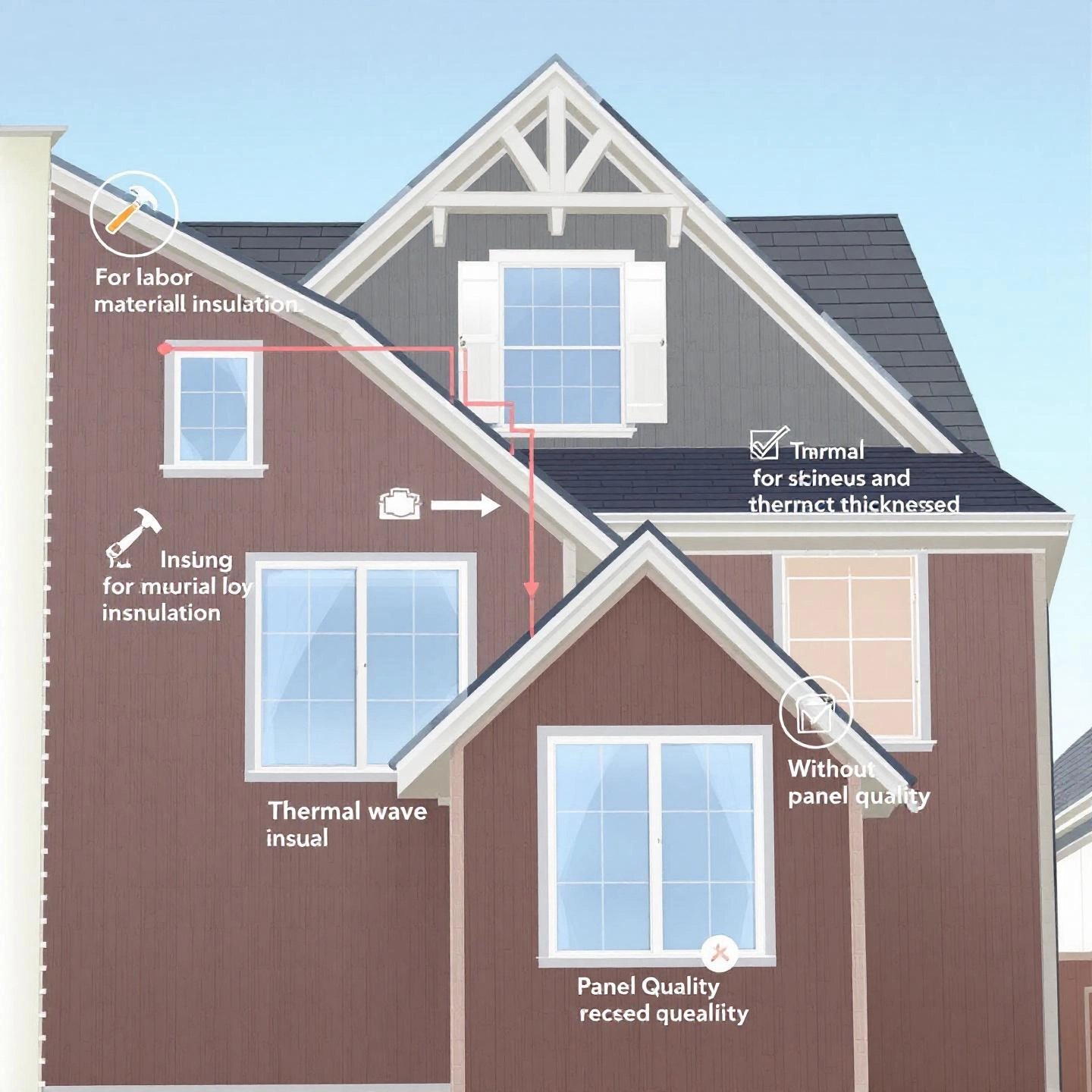
When you start planning an exterior upgrade, one of the first questions that comes to mind is, "How much will aluminum siding cost?" The answer isn’t always simple, but breaking down the key factors can make your decision much easier. Let’s walk through what drives the price of aluminum siding panels, how these costs compare to other siding materials, and why choosing quality manufacturing matters for your long-term investment.
Imagine two homes—one a single-story ranch, the other a three-story Victorian with ornate trim. Even if both choose aluminum siding, their costs will differ. Why? Because siding prices depend on more than just the material itself. Here’s what you should consider:
So, what does it all add up to? Here’s a look at typical pricing for aluminum siding:
Wondering how these numbers stack up against other options? Here’s a quick snapshot:
| Siding Material | Installed Cost per sq. ft. | Typical Lifespan |
|---|---|---|
| Aluminum | $6–$10 | 25–40 years |
| Vinyl | $4–$7 | 30–40 years |
| Fiber Cement | $5–$9 | 30–50 years |
| Steel | $10–$18 | 40–50 years |
| Wood | $7–$15 | 20–40 years |
While aluminum siding isn’t the absolute cheapest, it offers a strong balance of durability, weather resistance, and value—especially when you factor in its low maintenance requirements and recyclability.
It’s easy to focus on upfront price, but savvy homeowners look at total value over time. Aluminum siding lasts 25 to 40 years on average, and with proper care, can sometimes outlast the house itself. Its natural resistance to pests, fire, and rust means fewer repairs and lower maintenance costs compared to wood or lesser-quality metals.
Labor and material quality also play a role in long-term savings. For instance, panels from established manufacturers like Shengxin Aluminum are produced with advanced extrusion and finishing technologies, resulting in siding that resists fading, denting, and weathering better than lower-cost alternatives. Investing in quality now can mean decades of reliable performance and fewer costly surprises down the road.
Understanding these cost drivers helps you make a confident, informed decision—balancing your budget with the lasting value that aluminum siding panels can bring to your home. Next, let’s explore how painting can give your aluminum siding a fresh, updated look and extend its lifespan even further.
Ever looked at your home’s exterior and thought it seemed tired or faded? If your house features aluminum siding, you might wonder: Can you paint aluminum siding? The good news is yes—you absolutely can, and doing so can transform your home’s curb appeal while extending the life of your siding. Let’s break down why painting aluminum siding is not just possible, but often a smart move for homeowners.
Aluminum siding is known for its durability and resistance to weather, but over time, even the toughest finishes can fade, chalk, or lose their luster. Painting aluminum siding offers several practical benefits:
Not all paints are created equal when it comes to metal surfaces. For painting aluminum siding, experts recommend:
Always check the manufacturer’s recommendations, and avoid oil-based paints, which tend to crack or peel on aluminum over time.
Sounds simple? The secret to a long-lasting, professional-looking paint job is in the prep work. Proper cleaning, sanding, and priming are essential. Skipping these steps may lead to peeling, bubbling, or an uneven finish. Here’s why prep matters:
Imagine painting over dust or peeling paint—your hard work could be undone in months. That’s why investing time in prep pays off for years to come.
When you finish painting aluminum siding, you’ll notice an immediate improvement in your home’s appearance. But the benefits go beyond looks:
Ready to tackle painting aluminum siding yourself or considering professional help? In the next section, we’ll walk you through the essential steps for achieving a flawless, long-lasting finish—so you can enjoy your home’s fresh new look for years.
Ever stood in your yard, brush in hand, wondering how to paint aluminum siding so your home looks fresh and the finish actually lasts? Sounds complex, but with the right approach, you can achieve a professional result—even as a DIYer. Here’s a clear, step-by-step guide that covers everything from prep to paint, ensuring your efforts pay off for years to come.
Before you even pick up a paintbrush, take a close look at your siding. Are there dents, scratches, or loose panels? Is there chalky residue, mildew, or peeling paint? Addressing these issues up front is crucial for a flawless finish and maximum paint adhesion.
Proper cleaning is the foundation for paint that sticks and looks great. Imagine painting over dirt or chalk—your hard work could peel away in months. Here’s what works best:
Once clean, let the siding dry completely. Now’s the time to sand any rough or peeling areas lightly with a 100-grit abrasive disk, especially spots with old, flaking paint or stubborn oxidation. Fill any holes or deep scratches with exterior filler and sand smooth. Wipe away dust before you move on.
Priming is essential—don’t skip it! A quality acrylic primer designed for metal surfaces helps paint adhere and creates a uniform base, especially over previously oxidized or chalky siding (Tribble Painting).
Wondering what’s the best paint for aluminum siding? Experts agree: 100% acrylic exterior paint offers the best combination of durability, flexibility, and color retention. Satin or semi-gloss finishes are ideal—they resist dirt and moisture, but don’t highlight surface flaws like high-gloss paints can. Avoid oil-based paints, which can crack or peel on metal.
Ready to paint? Follow these steps for a flawless finish:
By following these essential steps, you’ll not only boost your home’s curb appeal but also protect your investment for years. Ready to keep your siding looking its best? In the next section, we’ll cover common repairs—so you’re prepared for anything that comes your home’s way.
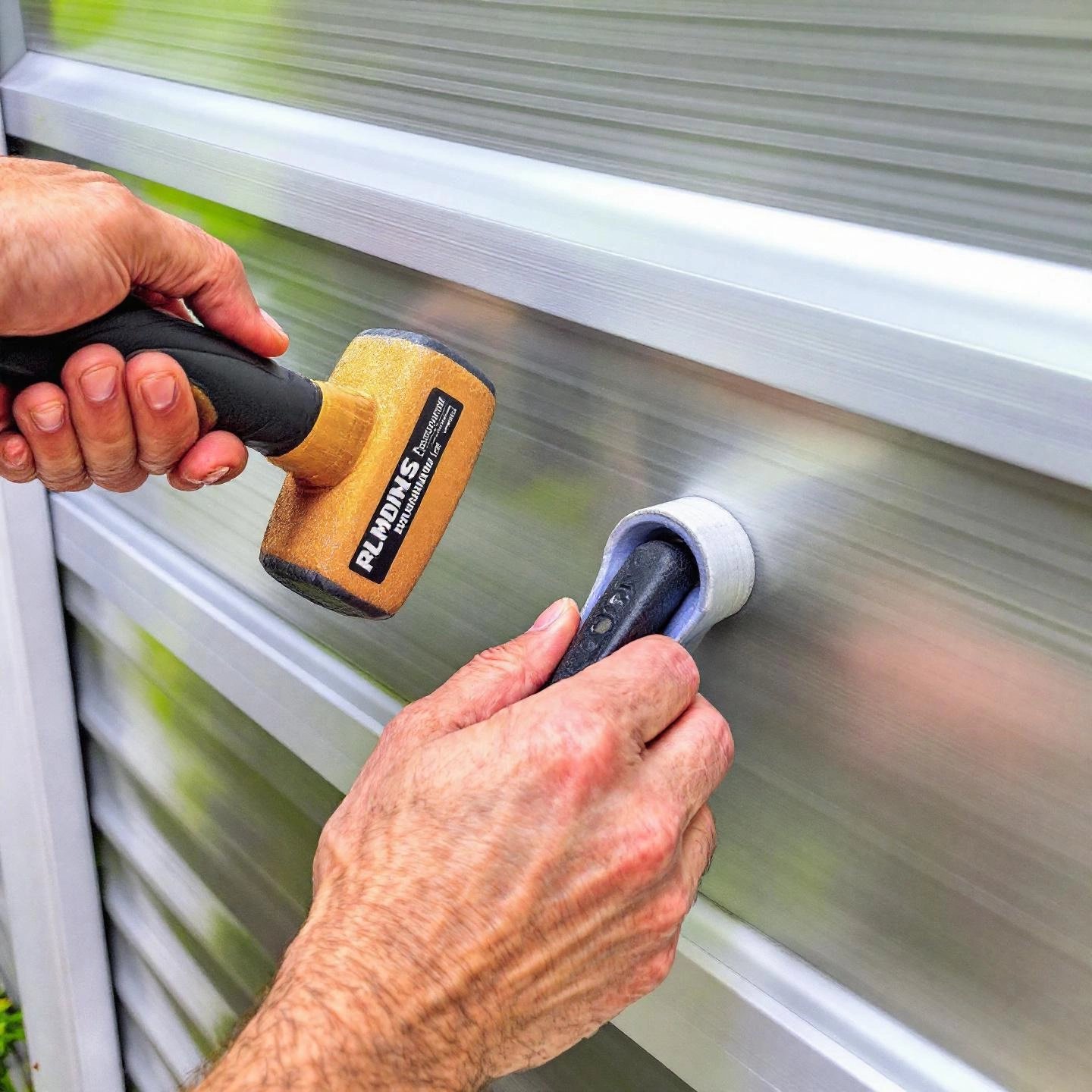
Ever noticed a dent from a stray baseball, a scratch from a ladder, or a loose panel after a windstorm? Aluminum siding is tough, but like any exterior material, it can show signs of wear. The good news? Many aluminum siding repair tasks are well within reach for handy homeowners—and knowing when to DIY versus call a pro can save you time and money. Let’s break down the most common issues and how to fix them, so your home’s exterior stays sharp and protected.
Imagine walking around your house after a storm. You might see:
Each of these issues can affect your siding’s look and performance, but most can be repaired without replacing the entire wall.
For many minor problems, you don’t need to be a contractor—just careful and prepared. Here’s how to tackle the most common fixes:
While many aluminum siding repair tasks are manageable, certain situations call for expert help:
If you’re unsure, or if repairs involve tall ladders or electrical hazards, don’t hesitate to contact a local siding professional for an assessment.
One of the trickiest parts of aluminum siding repair is achieving a seamless finish. Here’s how to keep repairs nearly invisible:
Staying on top of small repairs not only keeps your home looking sharp but also protects against water damage and costly fixes down the road. Once you’ve tackled repairs, keeping your siding clean will help maintain its appearance and longevity—let’s look at easy cleaning tips next.
Ever glanced at your home’s exterior and wondered why it looks dull or dingy, even though your siding is built to last? The answer is simple—regular cleaning. Knowing how to clean aluminum siding is key to keeping your home looking fresh and extending the life of your investment. But where do you start, and what’s the safest way to tackle stubborn stains or mildew? Let’s break it down with real-world tips and easy-to-follow steps.
While aluminum siding is known for its low maintenance, it’s not immune to the buildup of dust, pollen, mildew, or even soot from wildfires. Over time, these contaminants can dull the finish and speed up oxidation, making your siding look older than it is. Experts recommend cleaning your siding at least once a year—typically in the fall or spring—to prevent long-term damage and keep mold or mildew at bay. If you live in a dusty or humid region, or near trees that drop sap, you may want to clean more often.
| Basic Cleaning | For Stubborn Stains & Mold |
|---|---|
|
|
With these simple steps, your aluminum siding will stay bright and resilient year after year. Keeping it clean not only boosts curb appeal but also makes it easier to spot and address repairs early. Up next, we’ll guide you through finding the right professionals for installation or maintenance—so your siding stays in top shape for decades.
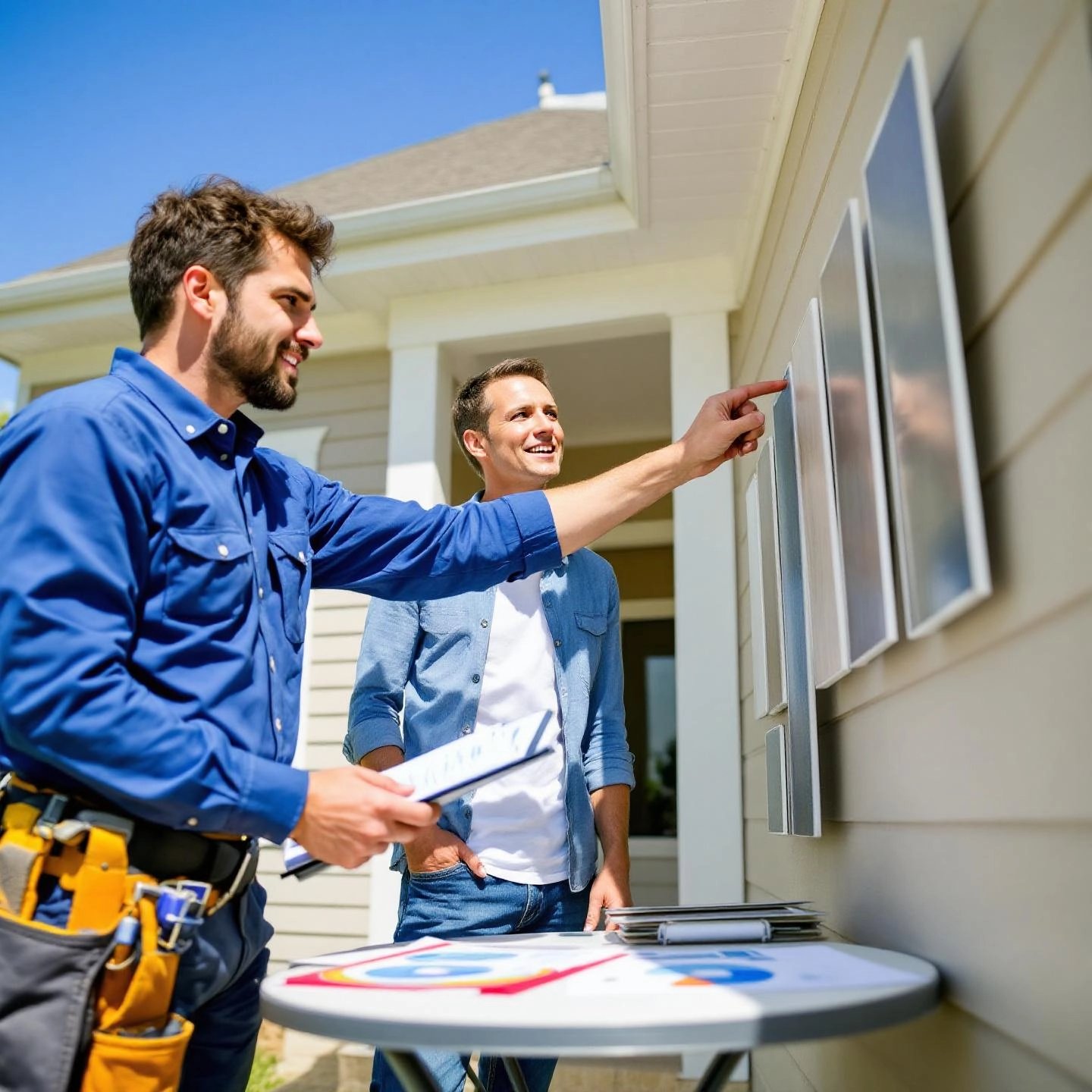
Ever typed “aluminum siding near me” into a search engine and felt overwhelmed by the choices? Or maybe you’ve wondered if it’s worth hiring a pro for installation or repair, versus tackling the job yourself. The reality is, finding the right aluminum siding installers near you can make all the difference in the outcome, longevity, and even the safety of your home’s exterior. Here’s how to navigate the process, step by step.
While minor cleaning or small touch-ups may be DIY-friendly, most aluminum siding installation and significant repairs call for expert hands. Professionals bring specialized experience, proper tools, and an understanding of local building codes that can prevent costly mistakes and ensure a seamless finish (SouthShore Contractors). If your project involves:
—it’s time to call in a pro.
So, where do you begin your search? Start local—experienced contractors are familiar with your region’s climate, permitting requirements, and common home styles. Here are some trusted ways to find qualified pros:
Imagine two contractors: one shows up with a business card and a handshake, the other provides insurance, licensing, and a detailed plan. Who would you trust with your home? Here’s what to check before you hire:
Before you commit, ask potential contractors:
These questions help ensure you’re hiring a true professional and not risking your investment on inexperience.
It’s tempting to go with the first contractor who seems capable, but comparing at least three estimates is essential. This allows you to:
Always get your agreement in writing, and avoid paying the full amount upfront—a reputable contractor will provide a clear payment schedule tied to project milestones (BBB).
| Step | What to Do |
|---|---|
| 1. Research | Check local directories, reviews, and ask for referrals. |
| 2. Verify Credentials | Confirm licensing, insurance, and relevant experience. |
| 3. Review Portfolios | Ask for photos and references from past aluminum siding projects. |
| 4. Get Multiple Quotes | Compare at least three detailed, itemized estimates. |
| 5. Ask Questions | Discuss warranties, timelines, and cleanup procedures. |
| 6. Review Contract | Ensure all terms are in writing and payment schedule is clear. |
Hiring skilled aluminum siding installers near you ensures your project is completed safely, on time, and to the highest standard—giving you peace of mind and a beautiful, long-lasting exterior. Next, we’ll wrap up with a summary of key takeaways and how to make the most of your investment for years to come.
When you step back and consider the big picture, what stands out most about aluminum siding? Imagine a home exterior that weathers storms, shrugs off insects, and looks sharp for decades with only minimal upkeep. That’s the promise—and the proven performance—of aluminum siding panels. But what truly sets this material apart in a crowded market of cladding options?
It’s easy to picture aluminum siding panels on classic homes, but their strengths go further. From commercial buildings to industrial facilities, aluminum’s resilience and low maintenance make it a go-to solution for demanding environments. Its adaptability in color, profile, and finish means it can elevate both curb appeal and performance—wherever it’s used.
So, how do you move forward? Start by weighing your priorities—durability, maintenance, appearance, and environmental impact. Compare quotes, ask about panel thickness and finish, and check manufacturer credentials. If you want peace of mind and lasting value, consider sourcing from a trusted producer like Shengxin Aluminum, known for advanced quality control and a wide selection of high-performance profiles.
In the end, aluminum siding offers a rare combination of longevity, flexibility, and sustainability. With the right materials and a bit of regular care, you’ll enjoy a beautiful, worry-free exterior for decades to come. Ready to take the next step? Explore your options, connect with reputable suppliers, and give your home the lasting protection and style it deserves.
Aluminum siding offers long-lasting durability, resists rust and pests, and requires minimal maintenance. It's also fire-resistant and highly recyclable, making it a sustainable choice. With a variety of styles and the ability to repaint, it suits both traditional and modern exteriors.
Aluminum siding is more resistant to fire and insects, and can be repainted for a fresh look. Vinyl siding is generally less expensive upfront and offers more color options, but is less eco-friendly and can become brittle in cold weather. Aluminum is ideal for harsh climates and those seeking a recyclable material.
Yes, aluminum siding can be painted. For best results, use 100% acrylic latex exterior paint in a satin or semi-gloss finish. Proper surface preparation and priming are essential to ensure long-lasting adhesion and a smooth finish.
Key cost factors include the size and design of your home, panel thickness (gauge), type of finish, labor rates, and any extra features like insulation or trim. High-quality panels from reputable manufacturers, such as Shengxin Aluminum, may cost more but offer greater long-term value.
Look for licensed and insured contractors with experience in aluminum siding. Check references, review portfolios, and request multiple detailed quotes. Using directories like BBB or platforms like Angi can help you compare professionals and ensure quality workmanship.
 serviço on-line
serviço on-line 0086 136 3563 2360
0086 136 3563 2360 sales@sxalu.com
sales@sxalu.com +86 136 3563 2360
+86 136 3563 2360